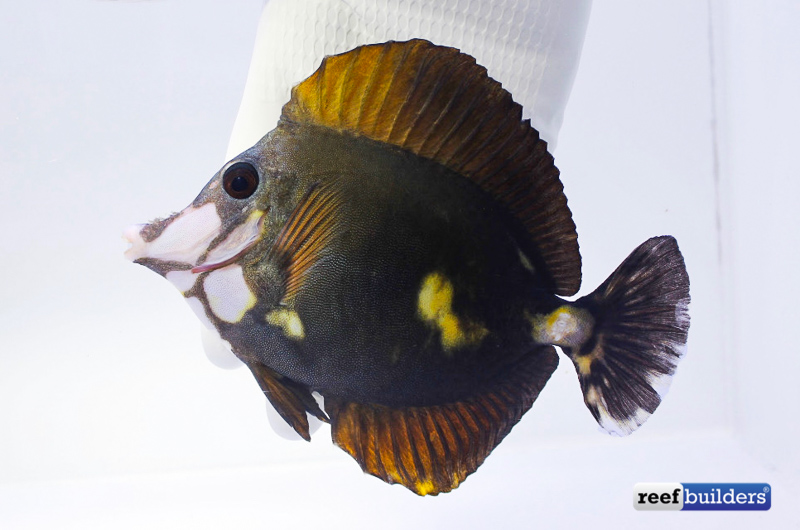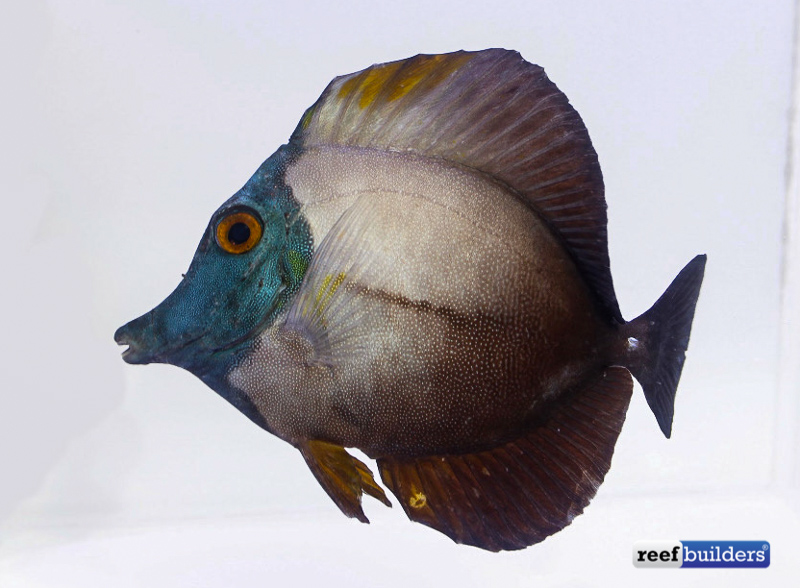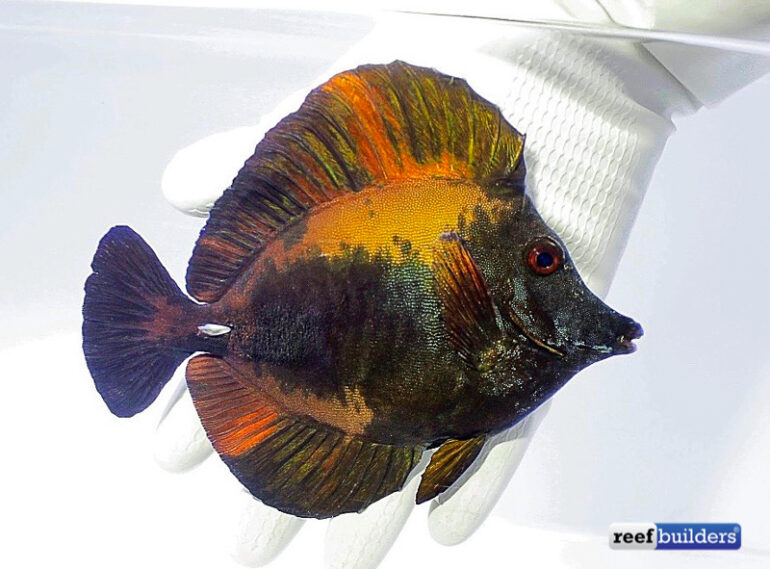If you’re on the lookout for a rare and unique surgeonfish for your saltwater or reef aquarium, there’s no better place to look right now than TSM Corals. Don & his crew have been acquiring these unusual fish from the Indian to the Pacific Ocean with a remarkable range of colors and patterns.
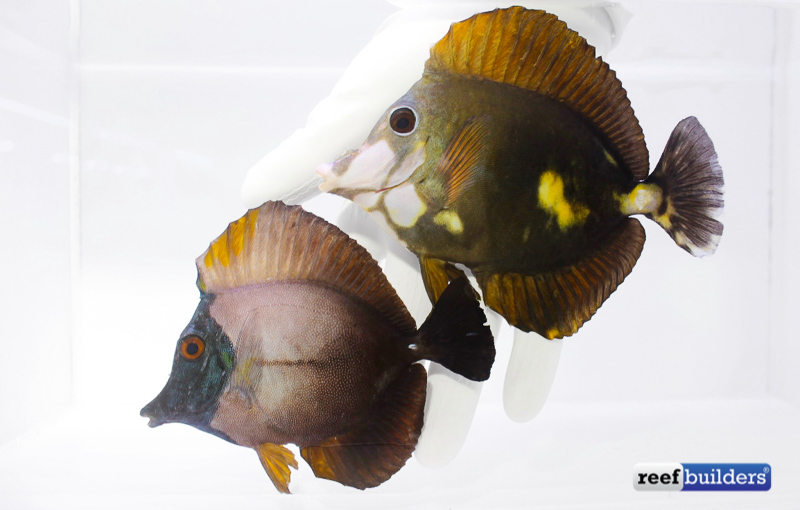
Tricolor or Koi Scopas tangs are not for everyone – their unusual green splotches or piebald light colored patches are not what you’d normally see on any normal fish. But once you get past the initial startling appearance, the green markings are nearly metallic, the eyes can be quite brilliant red, and these colors can really shine and stand out, especially in very colorful reef aquarium lighting.
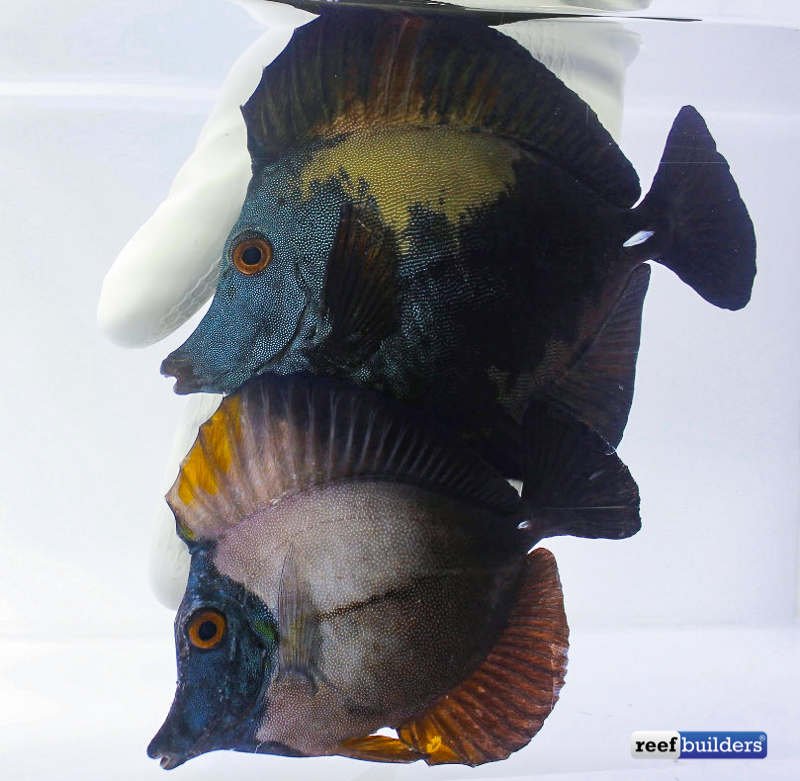
Among the latest crop of koi and tricolor scopas tangs being conditioned by TSM Corals is a newer color pattern we are calling a ‘Calico’ Scopas tang. This mostly emerald green fish has brilliant red eyes but instead of having distinct patches of white or yellow instead it has a brilliant golden orange area on the upper body with that same color being irregularly suffused and spotted throughout both the dorsal and anal fin.
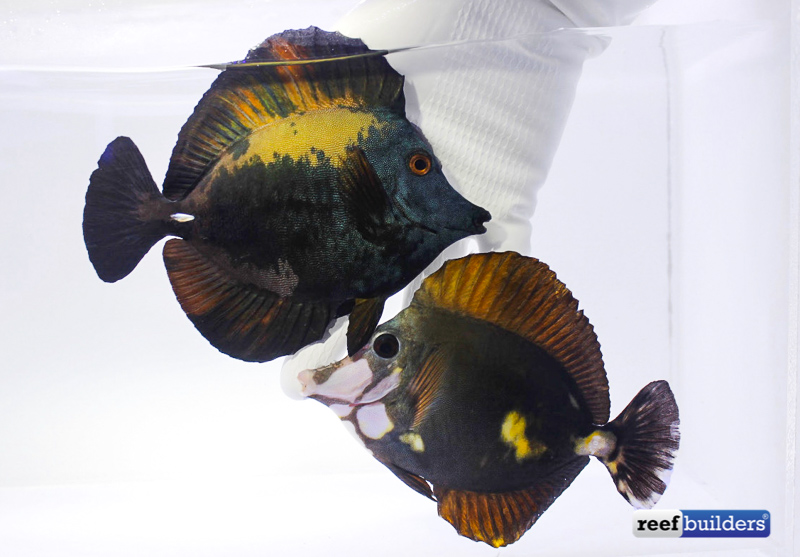
While many of the koi and tricolor scopas tangs recently imported to the aquarium hobby have come from an isolated patch of islands off the coast of Java Indonesia, TSM Corals’ latest haul comes from the place that first introduced the aquarium world to the Koi Scopas tangs. No one knows what causes the unusual aberration or why it seems to only be seen in larger adult specimens of Zebrasoma scopas, but we love how unpredictable and surprising it can manifest itself in this hardy popular aquarium fish.
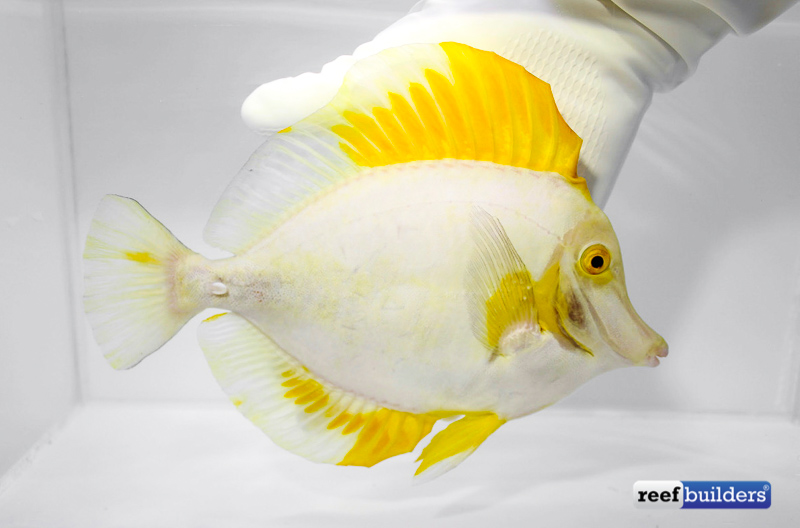
If you’re looking for a larger or brighter specimen of showy aberrant Zebrasoma tangs, TSM Corals has also been getting its hands on white and mostly white specimens of yellow tangs from Hawaii. Ever since Casper the white tang became a world famous aquarium fish, Hawaiian fish collectors have been on the lookout for the rare sightings of white yellow tangs among Zebrasoma flavescens in the Pacific Ocean.
